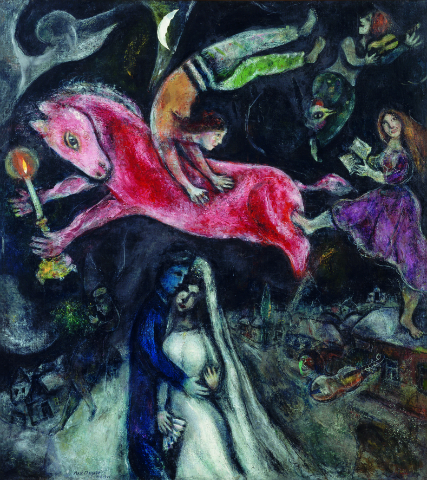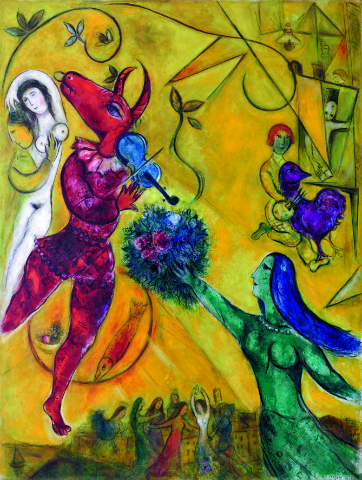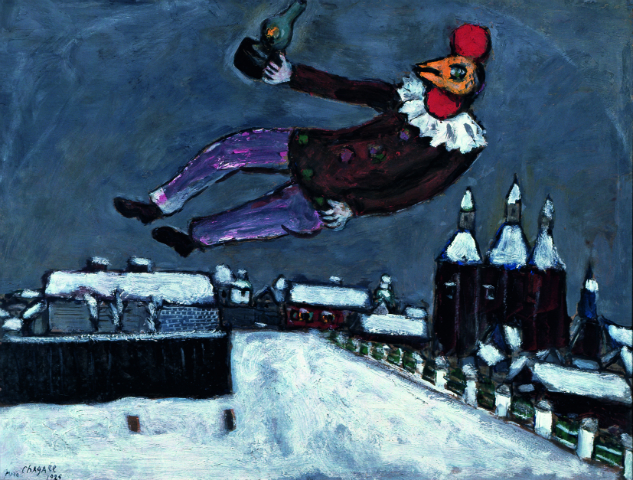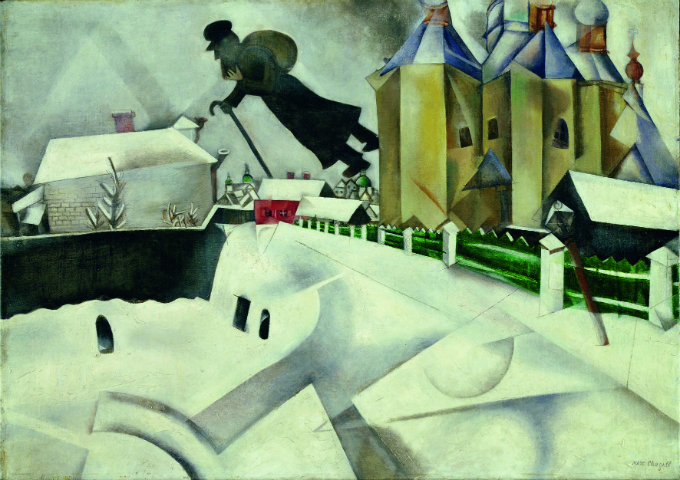Chag Attack - Marc Chagall at Musée de Luxembourg
- (first published on artlifemagazine.com)
- May 22, 2013
- 3 min read
Updated: Mar 25, 2020
(Paris.) The Musée de Luxembourg, situated next to the French Senate at Jardin de Luxembourg park was France's first museum of contemporary art, at a time when modern art was contemporary. Under its former name "Musée d'Artistes Vivants" ("Museum of Living Artists"), it played an important role for the public recognition of impressionism when forced to accept the Caillebotte legacy in 1894/6. Today, contemporary art is left to other institutions and Musée du Luxembourg lays its focus on canonized artists. The policy suits well to the park visitors coming here for a promenade, a game of chess, to listen to a Jazz Band or to watch the players on three tennis courts. Sorbonne University is only steps away, but so is Paris' most expensive luxury department store Le Bon Marché and the park is mainly populated by tourist groups and wealthy pensioners. Just like the whole Quartier Latin, one might say. The current Chagall exhibition seems perfectly adapted to the venue.
In an exhibition like this, one of the more interesting parts is the beginning. How did the artist develop and become the dictionary entry everybody knows ad nauseam today?
Many artists experiment with different styles at an early stage of their career and Chagall is no exception. Traces of cubism are all-too visible in works like Over Vitebsk (1915). His talent shows right from the start, as does a characteristic technique making oil painting appear like crayon or colored ink, and a fascination for dreams and religion. After a three years stay in Paris, Marc Chagall saw his first personal exhibition in 1914. He then returned for another eight years to his native Russia where he focused on village and family scenes, mixing in soldiers of the First World War.
Having finally left Vitebsk for good, Marc Chagall's interest completely shifted away from everyday human life to dreamy, fantastical scenes (Village Scene near Vitebsk, 1924-26, still set in the old home). Multicolored people and animals fly over cities, unconcerned by matters of perspective and scale. This dreaminess is not exactly surrealist, as Surrealism dug into dreams to extort the savage subconscious' violent and erotic layers, and both topics never much interested Chagall. If there is a need to find other artists to compare him to, there is a distant relation to German expressionist Franz Marc who shared Chagall's love for colorful cattle.
Marc Chagall’s preoccupation with religion grew stronger with the years as well, and from the 1930s onwards biblical scenes dominate his work. Finally this is Chagall as we know (and most people love) him. The exhibition shows how he arrived at this point not all of a sudden but in a steady development since leaving Russia, successively giving up form in favor of color. Where earlier works focused on individual human beings, with the outstanding example of the Rabbi of Vitebsk from 1914 - a magnificent portrait -, in Chagall's later career faces all resemble each other and intentionally lack expression (The Exodus, 1952-1956). Obviously, when focusing on religious motives, Chagall became influenced by medieval painting, he no longer cared for individuals, but for types.
Chagall's success with the public might be explained by the optimistic, consolatory harmony he achieves in these works. His religious paintings never elaborate on suffering, on tragedy, but on a cosmic harmony which he expressed in calm and peaceful colors, arranged after most basic visual principles. Even when he tried to visualize the mourning for his deceased wife, the images appear only gradually darker, as if he was not really capable of pessimist views. With Chagall, everything seems beautiful and full of hope. And there is nothing wrong with it.
Marc Chagall - Entre Guerre et Paix, Musée de Luxembourg, 21 February 2013-21 July 2013










Comments